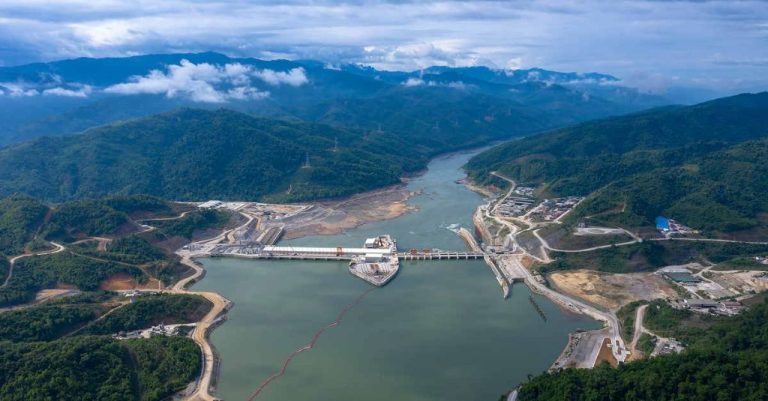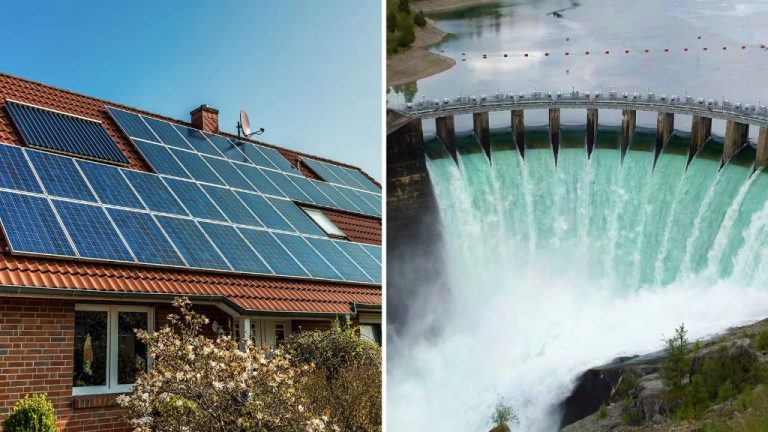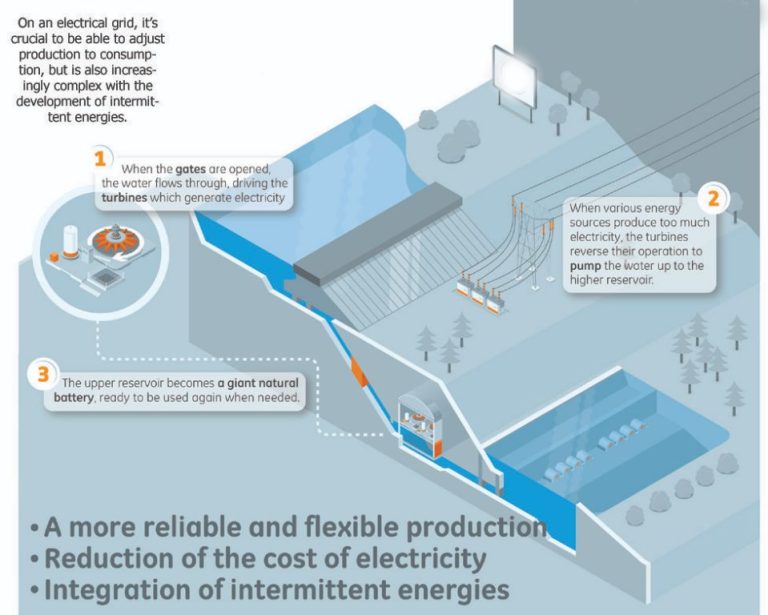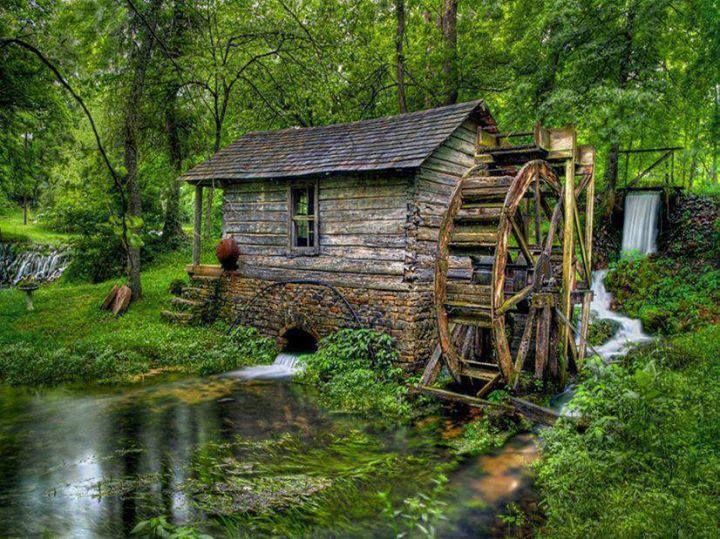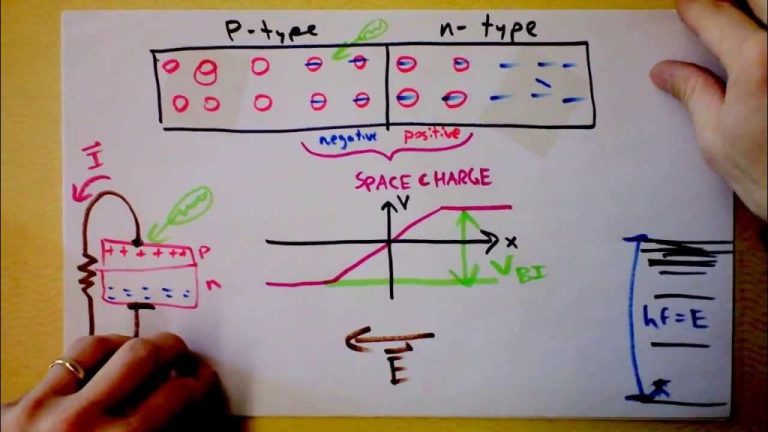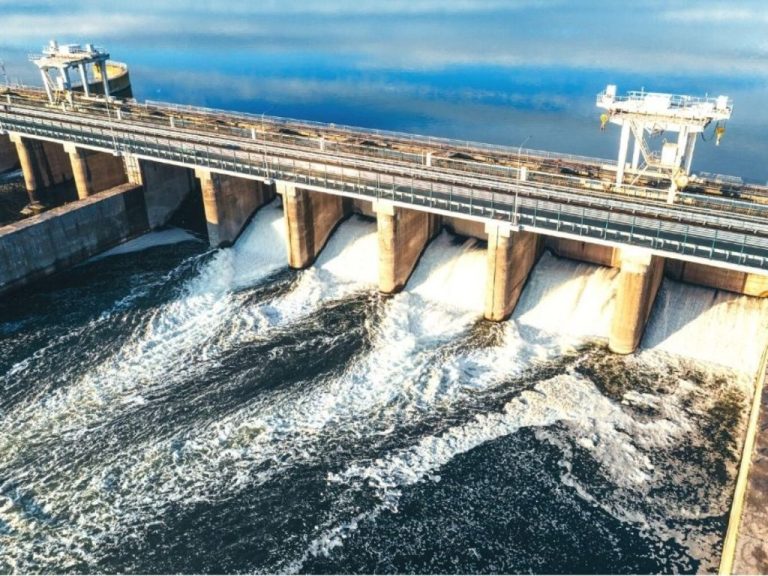Does Moving Water Create A Lot Of Energy?
Hydroelectric power is the process of using the energy from flowing water to generate electricity. It relies on the fundamental principles of physics that make hydropower an incredibly important renewable energy source. Water that is in motion, such as in a river or waterfall, contains kinetic energy. When this moving water turns turbines in a hydroelectric dam, the kinetic energy gets converted into mechanical energy. The turbine rotates and activates a generator to produce electricity. Overall, hydroelectric power transforms the natural flow of water into a useful form of energy that powers our homes, businesses, and communities.
With climate change and fossil fuel emissions being major global concerns, renewable energy sources like hydropower are more crucial than ever. Hydroelectricity offers a clean, sustainable way to produce electricity for large populations. Understanding how moving water can create so much usable energy provides insights into improving and expanding this technology across the world.
History of Hydroelectric Power
Humans have harnessed the power of moving water for thousands of years, dating back to ancient Roman times when water wheels were used for mechanical processes like milling grain. However, it wasn’t until the late 19th century that hydroelectric power generation began on a large scale.
The first hydroelectric power plants were built in the United States starting in 1880 at Niagara Falls and Appleton, Wisconsin. These early plants demonstrated that electricity could be generated from the natural flow of water through turbines and generators and then transmitted over distances.
Major landmark hydroelectric projects in the early 20th century include the massive Hoover Dam, completed in 1936, which ushered in an era of large dam and reservoir projects. The massive Grand Coulee Dam in Washington state, completed in 1942, still ranks as one of the largest hydroelectric plants in the United States today.
Hydroelectric power underwent rapid growth and development in the mid-20th century. Today, it supplies around 16% of the world’s electricity from an installed capacity of around 1,300 gigawatts globally.
Dams
Dams are a critical component of hydroelectric power generation. They serve two main purposes: controlling water flow and creating reservoirs. Dams are built across rivers to block and capture flowing water, regulating the amount that continues downstream. This creates large reservoirs where water can be stored at higher elevations. The reservoir acts like a battery, holding the potential energy of the water which can be converted into electricity.
Some of the largest dam projects in history have been built specifically for hydroelectric generation. The Three Gorges Dam in China, completed in 2006, spans over 1.4 miles and stands over 600 feet tall. With a reservoir holding nearly 40 billion cubic meters of water, it is the world’s largest power station in terms of installed capacity at 22,500 megawatts. Other massive projects include the Itaipu Dam bordering Brazil and Paraguay, which supplies 90% of Paraguay’s electricity, and the Grand Coulee Dam in Washington State, one of the largest concrete structures on Earth. Planning and constructing enormous dams requires tremendous engineering feats and multi-billion dollar investments to harness the renewable power inherent in moving water.
Turbines
Hydroelectric turbines convert the kinetic energy of moving water into mechanical power. There are two main types of hydro turbines – impulse and reaction.
Impulse turbines, like Pelton wheels, use the velocity of water to move a wheel with cups or buckets mounted on its rim. The moving water hits the buckets, causing the wheel to turn. Impulse turbines are used for high head sites where the water pressure is high.
Reaction turbines, like Francis and Kaplan turbines, are completely submerged in water. The blades of reaction turbines are shaped so that as water moves through, the pressure difference across the blades causes them to spin. Reaction turbines are used for low head sites where water pressure is lower.
For hydroelectric generation, the turbine spins an electrical generator to produce electricity. The optimal turbine type depends on the head and flow characteristics of the water source.
Power Generation
The key to hydroelectric power is generating electricity from the mechanical power created by moving water. This electricity is produced using a generator. Generators work by rotating coils of wire inside a magnetic field. As the coils spin, the magnetic field induces a small electric current in the wire.
The faster the coils spin, the larger the electric current. In hydroelectric dams, the force of moving water rotates turbines at high speeds. These turbines are connected to electromagnets that spin within the generator, creating a rotating magnetic field around the coils of wire. This induces an electric current which is tapped off as electricity.
The amount of electricity generated depends on the speed and size of the turbine. Larger turbines that spin quickly can rotate larger electromagnets, creating powerful magnetic fields within the generator. This results in higher electrical output. Modern hydroelectric generators can convert over 90% of the mechanical energy from the turbines into electrical energy.
Output
Hydroelectric power currently provides around 16% of the world’s electricity. As of 2021, hydropower generation capacity worldwide was estimated at around 1,310 gigawatts (GW). China leads in hydro capacity with over 350 GW, followed by Brazil, Canada, the United States, and Russia.
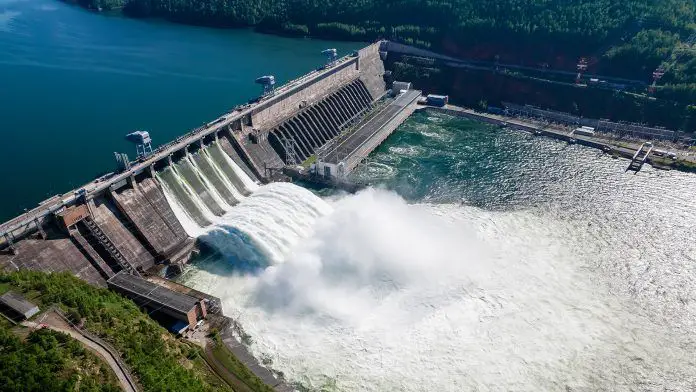
In 2020, hydropower generated around 4,415 terawatt-hours (TWh) of electricity globally. The top producers were China with around 1,310 TWh, Brazil with 430 TWh, Canada with 395 TWh, the United States with 275 TWh, and Russia with 178 TWh. The International Hydropower Association estimates under the right conditions, hydropower could meet over 20% of global electricity demand by 2030.
The amount of electricity generated by a hydroelectric dam depends on several factors. The height of the dam and volume of water in the reservoir determine the amount of potential energy available. The more potential energy, the higher the power output. The efficiency of the turbines also impacts electricity generation. Well-designed modern hydro turbines convert around 90% of the available energy into electricity.
Advantages
Hydroelectric power has several notable benefits that make it an attractive energy source. First, it relies on the renewable power of flowing water, rather than finite resources like fossil fuels. As long as there is an adequate water source, hydroelectric plants can generate clean electricity indefinitely.
Second, hydroelectricity has very low operating and maintenance costs compared to other energy sources. Once dams and power facilities are constructed, the energy is essentially free. There is no need to purchase fuel.
Third, hydroelectric systems can easily adjust their power output to meet shifting electricity demands. The flow of water driving the turbines can be controlled rapidly. Hydro plants also have storage capacity to bank water in reservoirs during high output periods for later use during low output periods.
Fourth, hydroelectricity does not produce air pollution emissions or carbon dioxide, like burning fossil fuels. This makes it one of the cleanest energy sources available today. In the move toward reduced emissions, hydro can provide reliable renewable baseload power.
Disadvantages
While generating electricity from moving water can provide clean, renewable energy, hydropower projects also have some important downsides to consider.
Building large dams to create reservoirs disrupts natural water flows and can negatively impact local wildlife and vegetation. Dams block fish migration routes and alter downstream ecosystems. The reservoirs themselves flood valleys and can displace human populations living there.
There are also methane emissions to account for, as plant matter decomposes underwater in the reservoirs. This is a potent greenhouse gas that contributes to climate change.
The costs of constructing and maintaining hydroelectric dams and reservoirs can be prohibitively high. Seasonal droughts can greatly reduce electricity output during dry months.
Upgrading existing dams with efficient turbine technologies is often needed for continued operations. But the benefits of upgrades must be weighed against environmental impacts.
While hydropower is renewable, reservoirs can fill with sediment over time and lose storage capacity. Most dams have finite lifespans of around 50 to 100 years.
Future Outlook
Experts project substantial growth and innovation in hydroelectric power in the coming decades. While most major river systems in developed nations have already been dammed, there remains significant potential to expand hydro capacity by upgrading existing infrastructure, building smaller and more efficient turbines, and developing new pumped storage facilities.
Emerging technologies like tidal and wave power may also boost hydroelectric generation in coastal areas. And new dam projects are still being proposed and built in developing countries, especially in Asia, Africa, and South America. With global electricity demand rising, hydro’s renewable nature and ability to quickly adjust output makes it an attractive option to balance variable wind and solar generation.
That said, environmental concerns and competing demands for water resources will constrain hydro’s growth in many regions. Projects must be carefully designed to minimize ecosystem impacts. And climate change poses challenges, with shifting precipitation patterns potentially affecting reservoir supplies. Overall though, hydroelectricity will likely remain an essential component of the world’s renewable energy mix for the foreseeable future.
Conclusion
Hydroelectric power is an important source of renewable energy that has provided electricity to communities for over a century. As highlighted in this article, moving water contains kinetic energy that can be harnessed and converted into electricity using hydropower technologies like dams, turbines, generators, and more. Though not without some environmental impacts, hydropower offers a clean, renewable way to meet electricity demands. With about 16% of the world’s power supplied by hydroelectricity, this technology continues to serve an integral role in diversifying energy mixes and reducing reliance on fossil fuels. While growth in hydro capacity has slowed in recent decades, existing infrastructure can still be upgraded and expanded. With the urgent need to decarbonize our economies, innovative new hydropower projects may help unlock the full potential of this green power source.

